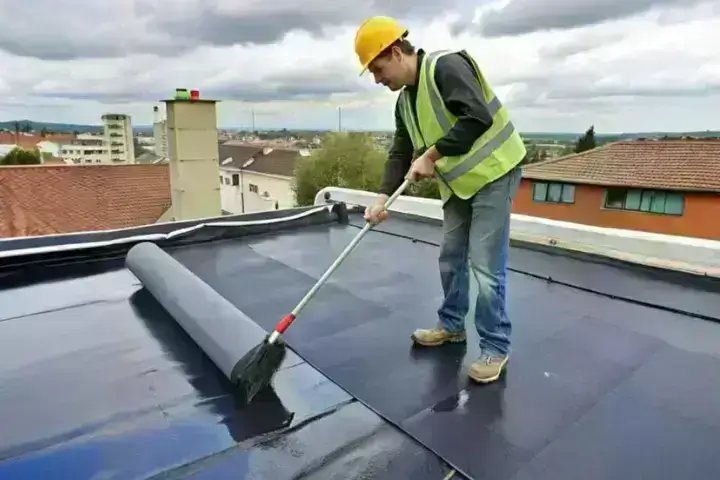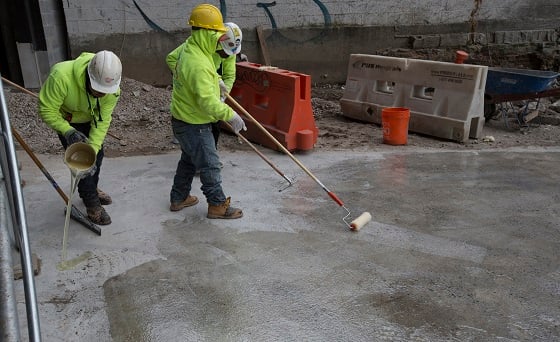Types of Waterproofing: Checking Out the Different Methods and Their Applications
Waterproofing is a crucial facet of building and construction and maintenance. It safeguards frameworks from the damaging results of water damages. There are numerous methods readily available, each with its unique applications and advantages. From membrane systems to cementitious options, recognizing these alternatives is important for reliable execution. The choice of waterproofing approach can greatly impact sturdiness and long life. Checking out these numerous strategies reveals their distinct benefits and potential difficulties, triggering further consideration of ideal remedies.
Membrane Waterproofing Equipments
Membrane waterproofing systems work as an essential barrier versus water breach in different structures. These systems commonly are composed of thin sheets made from materials like rubber, thermoplastic, or asphalt, which are put on surfaces to avoid wetness infiltration. They can be set up over or listed below grade and are especially efficient in areas susceptible to high water exposure, such as basements, roof coverings, and foundations.The installment process includes cleaning the substratum, applying adhesives or primers, and specifically fitting the membrane to ensure total insurance coverage. Membrane layer systems can be either fully adhered, mechanically connected, or laid loose, depending on the specific demands of the task. They supply sturdiness and versatility, accommodating architectural movements without compromising their waterproofing capabilities. Moreover, these systems can be strengthened with added layers for enhanced security. Eventually, membrane waterproofing systems are essential for protecting structures versus water damage and keeping lasting integrity.
Liquid-Applied Waterproofing Coatings
Liquid-applied waterproofing layers provide a functional service for safeguarding surface areas from water seepage - Sump pump installation & replacement Omaha. These coatings include liquid products that, when applied, form a smooth, adaptable membrane layer. Their flexibility permits for application on various substratums, including concrete, steel, and wood. The finishes can be used in varied atmospheres, from household to industrial settings, making them suitable for roofing systems, foundations, and below-grade structures.One significant benefit of liquid-applied finishings is their capacity to conform to irregular forms and penetrate splits, producing a durable obstacle against wetness. They commonly exhibit excellent adhesion homes and resistance to UV radiation, guaranteeing long life and longevity. In addition, the application procedure is typically uncomplicated, permitting quick installment and lowered labor expenses. This approach likewise reduces the danger of water merging, as the continuous layer successfully directs water away from susceptible locations. In general, liquid-applied waterproofing coatings are an effective option for complete water defense
Cementitious Waterproofing Solutions

Cementitious waterproofing services offer a robust choice for frameworks requiring reputable wetness defense. These systems mostly make use of a blend of cement, sand, and chemical additives to develop a water-proof obstacle. They are commonly related to surface areas such as concrete walls, structures, and floorings, offering a sturdy, long-lasting defense against water intrusion.One of the key benefits of cementitious waterproofing is its ease of application; it can be applied using a brush, roller, or spray, making it appropriate for different task sizes. Additionally, this method is compatible with several surface areas and can commonly be used combined with other waterproofing techniques.Cementitious remedies are especially reliable in settings where water direct exposure is a worry, such as basements or below-grade structures. Their outstanding bond homes ensure that they bond well with substrates, providing a strong and impenetrable layer against moisture penetration.
Bentonite Waterproofing
Bentonite waterproofing is a highly effective method that makes use of salt bentonite clay to produce an all-natural obstacle versus water. This method makes use of the distinct residential or commercial properties of bentonite, which expands upon contact with water, sealing any potential leakages and avoiding moisture seepage. It is frequently made use of in numerous applications, consisting of structure walls, passages, and retaining wall surfaces, where water resistance is essential.Bentonite can be used in a number of forms, such as panels or coverings, giving convenience in installation. Its capability to self-seal makes it an attractive option for locations subject to moving dirt or rising and falling water degrees. Furthermore, bentonite waterproofing is ecologically pleasant, as it is a natural product that does not present damaging chemicals right into the environments.
Water Drainage and Exterior Waterproofing Solutions
Efficient waterproofing usually entails a mix of strategies, including drainage and exterior systems. Drain systems, such as French drains and sump pumps, are created to learn this here now redirect water away from frameworks, lowering hydrostatic stress versus structures. These systems are essential in protecting against water accumulation that can result in architectural damages and mold growth.External waterproofing, on the various other hand, entails using safety barriers to the structure's outside. Strategies such as the installation of water resistant membrane layers, use this link coverings, or sealants can help stop water seepage. This technique not only shields the structure yet likewise boosts the total resilience of the structure.Together, water drainage and outside waterproofing systems form a comprehensive service to take care of water successfully. By applying these approaches, homeowner can guard their investments versus the destructive effects of moisture, guaranteeing long-term security and security for their buildings.
Often Asked Inquiries
Exactly how Do I Choose the Right Waterproofing Technique for My Project?
Selecting the right waterproofing approach relies on aspects such as task kind, ecological conditions, spending plan, and preferred longevity. Evaluating these elements permits for informed decisions customized to specific demands and needs.

Can Waterproofing Be Applied in Cold Climate Conditions?
Waterproofing can be used in cool weather conditions, yet it calls for certain materials and strategies. Cold temperature basics levels might influence healing times and attachment, necessitating careful selection of products made for low-temperature application.
What Are the Typical Signs of Waterproofing Failure?
Common indicators of waterproofing failure consist of visible water discolorations, peeling paint, damp smells, mold and mildew growth, and fractures in walls or foundations. Water Solutions. These indicators suggest that moisture is permeating the barrier, endangering its effectiveness
How Much Time Does Waterproofing Last Before Needing Maintenance?
The longevity of waterproofing differs, generally lasting in between 5 to ten years. Elements such as material high quality, ecological conditions, and upkeep techniques influence its longevity, necessitating periodic examinations to ensure efficient security versus water breach.
Are There Eco-Friendly Waterproofing Options Available?
The inquiry of environmentally friendly waterproofing choices reveals an expanding passion in lasting materials (Sump pump discharge drainage Omaha). Various all-natural compounds, such as plant-based sealants and recycled products, offer effective options while decreasing ecological effect, interesting ecologically aware consumers